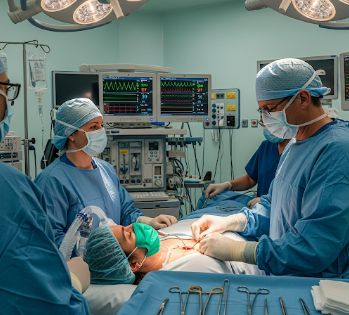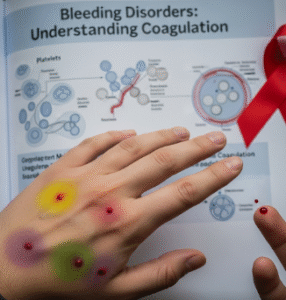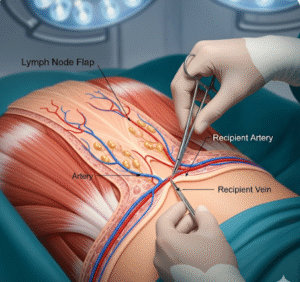What is Having an Operation?
Having an operation, or surgery, refers to a medical procedure in which a surgeon performs an intervention to treat disease, correct a physical problem, repair injury, or improve function. Surgeries may involve removing tissue, repairing organs, replacing body parts, or implanting devices.
💡 Key Points About Surgery:
✔️ Invasive or minimally invasive procedures – Open surgery or laparoscopic/robotic surgery
✔️ Diagnostic or therapeutic purpose – From biopsies to major organ surgery
✔️ Performed under anesthesia – Local, regional, or general anesthesia ensures comfort and safety
✔️ Controlled medical environment – Conducted in operating theaters with sterile conditions
Types of Surgery:
➡️ Elective surgery – Planned procedures for non-emergency conditions
➡️ Emergency surgery – Performed immediately due to trauma, bleeding, or life-threatening illness
➡️ Minimally invasive surgery – Laparoscopic or robotic techniques for smaller incisions
➡️ Reconstructive or cosmetic surgery – To restore function or appearance
➡️ Palliative surgery – To relieve symptoms in advanced disease
In Korea, surgery is performed in advanced hospitals, specialized surgical centers, and tertiary care hospitals, often with high-tech equipment and expert surgical teams.
Why It’s Done
Surgery is performed for treatment, symptom relief, diagnosis, or prevention:
✔️ Treatment of disease – Tumor removal, appendectomy, gallbladder removal
✔️ Repair of injury – Fracture fixation, tendon repair, organ repair
✔️ Symptom relief – Relieve pain, obstruction, or functional limitations
✔️ Diagnostic purposes – Biopsy, exploration, or assessment of internal organs
✔️ Preventive surgery – Remove precancerous tissue or correct congenital anomalies
Clinical Benefits:
➡️ Restores normal function → Enables daily activities and mobility
➡️ Alleviates pain and discomfort → Improves quality of life
➡️ Prevents disease progression → Early intervention can be life-saving
➡️ Supports diagnosis and treatment planning → Confirms conditions that imaging or labs cannot fully reveal
In Korea, surgical care is highly organized, with preoperative assessment, surgical planning, and postoperative monitoring to optimize outcomes.
Alternatives
Depending on the condition, alternatives to surgery may include:
⭐ Medications – To manage symptoms or treat underlying disease
⭐ Physical therapy or rehabilitation – For musculoskeletal injuries or functional restoration
⭐ Minimally invasive procedures – Endoscopy, catheter-based interventions, or radiology-guided procedures
⭐ Watchful waiting / observation – For slow-progressing or asymptomatic conditions
⭐ Lifestyle interventions – Diet, exercise, or non-invasive therapy
👉 Key Point: Surgery is often the most effective option for severe, acute, or structurally significant problems, while alternatives may be suitable for milder or chronic conditions.
Preparation
Proper preparation ensures safety and optimal outcomes during surgery:
🔹 Preoperative assessment – Blood tests, ECG, chest X-ray, and medical history review
🔹 Medication management – Adjust or stop anticoagulants, diabetes medications, or chronic therapy
🔹 Anesthesia evaluation – Determines safest anesthesia type and plan
🔹 Fasting instructions – Typically 6–8 hours before surgery to prevent aspiration
🔹 Informed consent – Understanding risks, benefits, expected outcomes, and alternatives
⭐ Arrange post-surgery support – Transportation and assistance with daily activities
⭐ Pre-surgery counseling – Discuss procedure, recovery timeline, and expected limitations
How It’s Done
The surgical process varies depending on the type and complexity of the operation:
- Anesthesia Administration
✔️ Local, regional, or general anesthesia depending on the procedure and patient condition
✔️ Monitored by an anesthesiologist throughout surgery - Surgical Procedure
🔹 Surgeon performs intervention using open, minimally invasive, or robotic techniques
🔹 Incisions made in sterile conditions, affected tissues treated, repaired, or removed
🔹 Vital signs monitored continuously - Post-Surgery Protocol
➡️ Wound closure and dressing
➡️ Recovery in Post-Anesthesia Care Unit (PACU)
➡️ Pain management and early mobilization
Highlights:
✔️ Duration depends on type of surgery – from 30 minutes to several hours
✔️ High-tech operating rooms in Korea ensure precision and safety
✔️ Multidisciplinary teams coordinate care for complex procedures
Recovery / Follow-up
Recovery from surgery depends on procedure type, anesthesia, and individual health:
✔️ Immediate post-op care – Monitoring vital signs, managing pain, and preventing complications
✔️ Hospital stay – Outpatient procedures may allow same-day discharge; major surgeries require 1–14 days or more
✔️ Wound care and dressing – Maintain hygiene and monitor for infection
✔️ Physical therapy / rehabilitation – Enhances recovery, mobility, and function
✔️ Follow-up appointments – Monitor healing, assess surgical outcomes, and remove sutures or staples
⭐ Expected recovery timeline:
- Minor surgery: 1–2 weeks for normal activity
- Major surgery: Several weeks to months for full recovery
- Rehabilitation may continue for 3–6 months for complex procedures
Complications / Risks
All surgeries carry potential risks, which are minimized by modern surgical care:
⚠️ Bleeding – May require transfusion or additional intervention
⚠️ Infection – Wound or systemic infection
⚠️ Anesthesia-related complications – Nausea, allergic reactions, or cardiovascular issues
⚠️ Blood clots – Deep vein thrombosis or pulmonary embolism
⚠️ Organ or tissue injury – Rare but possible during surgery
⚠️ Delayed healing or scarring – Affected by age, nutrition, or comorbidities
➡️ In Korea, highly trained surgeons, advanced monitoring, and strict sterile protocols reduce complication risks significantly.
Treatment Options / Surgical Services in Korea
Korea offers world-class surgical services across a broad range of specialties:
🏥 General Surgery – Appendectomy, gallbladder removal, hernia repair
🏥 Orthopedic Surgery – Joint replacement, fracture fixation, tendon repair
🏥 Neurosurgery – Brain, spinal, and nerve surgeries
🏥 Cardiothoracic Surgery – Heart, lung, and vascular procedures
🏥 Plastic and Reconstructive Surgery – Cosmetic, trauma, or congenital reconstruction
🏥 Robotic and Minimally Invasive Surgery – Laparoscopic, endoscopic, and robot-assisted techniques
🏥 Pediatric Surgery – Specialized care for infants and children
Why Korea is a Preferred Destination:
✔️ Expert surgical teams – Board-certified surgeons with high procedural volume
✔️ Advanced technology – Robotic systems, laparoscopic instruments, and high-resolution imaging
✔️ Comprehensive care – From pre-op evaluation to rehabilitation
✔️ High safety standards – Infection control, anesthesia monitoring, and multidisciplinary collaboration
✔️ Cost-effective – High-quality care at competitive pricing
Approximate Costs in Korea:
🔹 Minor outpatient surgery → $500 – $1,500
🔹 Major elective surgery → $2,000 – $15,000 depending on procedure
🔹 Robotic or minimally invasive surgery → $5,000 – $20,000
🔹 Hospital stay and rehabilitation → $50 – $500 per day depending on services
Conclusion
Having an operation (surgery) is a critical step for treating disease, repairing injury, or improving function, and modern surgical care ensures safety, efficacy, and optimal outcomes.
It helps patients:
✔️ Resolve medical or structural problems
✔️ Alleviate pain and improve quality of life
✔️ Restore mobility, function, or appearance
✔️ Prevent disease progression or complications
In Korea, surgical care provides:
✔️ Highly skilled surgeons and specialized teams
✔️ Advanced technology and minimally invasive options
✔️ Comprehensive perioperative care – Pre-op to post-op rehabilitation
✔️ High safety standards and patient-centered care
👉 Key Message: Surgery in Korea offers safe, precise, and effective treatment, enabling patients to recover function, improve quality of life, and benefit from world-class healthcare.













